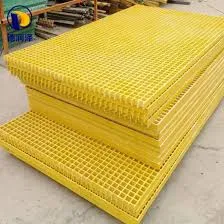
-
 Afrikaans
Afrikaans -
 Albanian
Albanian -
 Amharic
Amharic -
 Arabic
Arabic -
 Armenian
Armenian -
 Azerbaijani
Azerbaijani -
 Basque
Basque -
 Belarusian
Belarusian -
 Bengali
Bengali -
 Bosnian
Bosnian -
 Bulgarian
Bulgarian -
 Catalan
Catalan -
 Cebuano
Cebuano -
 China
China -
 China (Taiwan)
China (Taiwan) -
 Corsican
Corsican -
 Croatian
Croatian -
 Czech
Czech -
 Danish
Danish -
 Dutch
Dutch -
 English
English -
 Esperanto
Esperanto -
 Estonian
Estonian -
 Finnish
Finnish -
 French
French -
 Frisian
Frisian -
 Galician
Galician -
 Georgian
Georgian -
 German
German -
 Greek
Greek -
 Gujarati
Gujarati -
 Haitian Creole
Haitian Creole -
 hausa
hausa -
 hawaiian
hawaiian -
 Hebrew
Hebrew -
 Hindi
Hindi -
 Miao
Miao -
 Hungarian
Hungarian -
 Icelandic
Icelandic -
 igbo
igbo -
 Indonesian
Indonesian -
 irish
irish -
 Italian
Italian -
 Japanese
Japanese -
 Javanese
Javanese -
 Kannada
Kannada -
 kazakh
kazakh -
 Khmer
Khmer -
 Rwandese
Rwandese -
 Korean
Korean -
 Kurdish
Kurdish -
 Kyrgyz
Kyrgyz -
 Lao
Lao -
 Latin
Latin -
 Latvian
Latvian -
 Lithuanian
Lithuanian -
 Luxembourgish
Luxembourgish -
 Macedonian
Macedonian -
 Malgashi
Malgashi -
 Malay
Malay -
 Malayalam
Malayalam -
 Maltese
Maltese -
 Maori
Maori -
 Marathi
Marathi -
 Mongolian
Mongolian -
 Myanmar
Myanmar -
 Nepali
Nepali -
 Norwegian
Norwegian -
 Norwegian
Norwegian -
 Occitan
Occitan -
 Pashto
Pashto -
 Persian
Persian -
 Polish
Polish -
 Portuguese
Portuguese -
 Punjabi
Punjabi -
 Romanian
Romanian -
 Russian
Russian -
 Samoan
Samoan -
 Scottish Gaelic
Scottish Gaelic -
 Serbian
Serbian -
 Sesotho
Sesotho -
 Shona
Shona -
 Sindhi
Sindhi -
 Sinhala
Sinhala -
 Slovak
Slovak -
 Slovenian
Slovenian -
 Somali
Somali -
 Spanish
Spanish -
 Sundanese
Sundanese -
 Swahili
Swahili -
 Swedish
Swedish -
 Tagalog
Tagalog -
 Tajik
Tajik -
 Tamil
Tamil -
 Tatar
Tatar -
 Telugu
Telugu -
 Thai
Thai -
 Turkish
Turkish -
 Turkmen
Turkmen -
 Ukrainian
Ukrainian -
 Urdu
Urdu -
 Uighur
Uighur -
 Uzbek
Uzbek -
 Vietnamese
Vietnamese -
 Welsh
Welsh -
 Bantu
Bantu -
 Yiddish
Yiddish -
 Yoruba
Yoruba -
 Zulu
Zulu
Exploring the Applications and Benefits of FRP Sheets in Modern Construction
Understanding FRP Sheets The Future of Material Technology
Fiber Reinforced Polymer (FRP) sheets have emerged as a vital material in various industries due to their unique properties and advantages. Utilizing advanced composite technology, FRP sheets are constructed from a polymer matrix reinforced with fibers, which can include materials like glass, carbon, or aramid. This combination results in a lightweight, high-strength material that is becoming increasingly popular across multiple sectors such as construction, marine, automotive, and aerospace.
Properties of FRP Sheets
One of the most significant benefits of FRP sheets is their exceptional strength-to-weight ratio. They are lightweight yet offer outstanding structural integrity, making them ideal for applications where minimizing weight is crucial without compromising strength. Additionally, FRP materials are resistant to corrosion, chemicals, and UV radiation, which enhances their durability and lifespan compared to traditional materials like steel or wood. This resistance to environmental degradation makes FRP sheets an excellent choice for outdoor and harsh conditions.
Fire resistance is another key feature of FRP sheets. Many types of FRP can be formulated to meet various fire ratings, which is critical in applications such as buildings and public transport systems where safety is paramount. Furthermore, these sheets have excellent electrical insulating properties, making them suitable for use in electrical and electronic applications.
Applications in Different Industries
FRP sheets are versatile and can be used in numerous applications. In the construction industry, they are increasingly being used for retrofitting structures, providing additional strength where needed. Their application can significantly enhance the load-bearing capacity of beams and columns, extend the service life of infrastructures, and reduce maintenance costs. Additionally, FRP sheets are utilized for creating non-corrosive and lightweight facades, drainage systems, and walkways.
frp sheet

In marine applications, FRP sheets are favored for their resistance to saltwater and other corrosive environments. Boat hulls, decks, and other components made from FRP are lightweight, enhancing fuel efficiency without sacrificing performance. Similarly, in the automotive industry, manufacturers incorporate FRP materials into car body panels and structural components, allowing for lighter vehicles that improve fuel efficiency and emissions.
Aerospace is yet another field where FRP sheets are making a significant impact. They are used in aircraft components due to their lightweight nature and ability to withstand extreme conditions, thereby contributing to improved fuel efficiency and performance.
Future Prospects
The future of FRP sheets looks promising, with ongoing research and advancements in material science enhancing their performance and expanding their applications. Innovations in recycling techniques for FRP materials are also on the rise, addressing environmental concerns associated with these composites. This sustainability trend could lead to wider acceptance and use of FRP sheets, as companies and consumers increasingly prioritize eco-friendly practices.
Additionally, as construction and engineering practices evolve, there will be a greater emphasis on using advanced materials like FRP to meet modern challenges. The push towards renewable energy sources and sustainable building practices will likely drive further innovation and application of FRP sheets.
Conclusion
In summary, Fiber Reinforced Polymer sheets represent a significant advancement in material technology. Their unique combination of lightweight properties, durability, and resistance to environmental factors positions them as a superior choice across various industries. As technology progresses, we can expect to see even more creative applications and improvements in FRP sheet technology, promoting a shift towards more efficient and sustainable solutions in engineering and manufacturing. Whether in construction, marine, automotive, or aerospace sectors, the versatility and reliability of FRP sheets undoubtedly play a pivotal role in shaping the future of material science.









